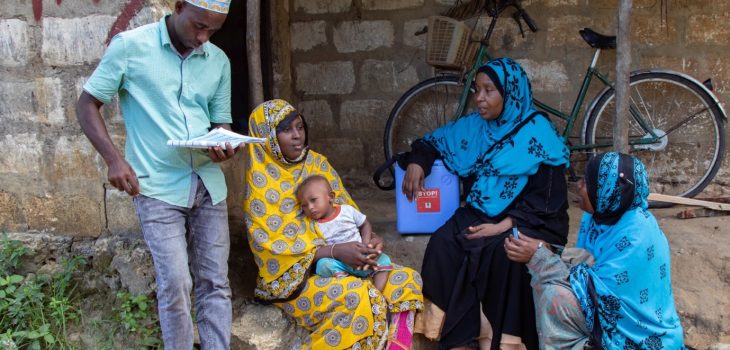By Maryam Hemed, Ngwegwe Christopher Bulula, Alex Mphuru, Federica Margini, Gabrielle Appleford, Wendy Erasmus (UNICEF Tanzania Country Office)
Background
Service integration is a strategy to better meet patient and population needs. This approach refers to the coordinated and integrated delivery of services such that patients receive comprehensive, continuous, and efficient care. By design, it enhances equity, promotes efficiency and is crucial for pursuing universal health coverage.
Implementing service integration can be challenging in resource-constrained settings. Zanzibar adopted service integration to improve access and protect children from vaccine-preventable diseases. This blog highlights the experience of an integrated campaign model for Vitamin A supplementation, polio, and measles-rubella (MR) vaccination implemented in 2022. It may be of interest to policymakers and health service managers considering the adoption of such a strategy.
Campaign action
In November 2022, Zanzibar implemented a multiantigen house-to-house campaign targeting under-five children with measles-rubella (MR) vaccination and vitamin A supplementation as part of the round 4 polio immunization campaign, in response to a polio and measles outbreaks in the neighbouring countries.
“We used evidence-based medicine and a present threat from the measles outbreak as the basis for decision making…how would you feel if you inoculated for polio, but the same children died of measles?” [National government respondent]
The Minister of Health and Director of Preventive Services championed the integrated campaign model, which is spearheaded in the draft immunization policy guideline. The document recognizes the importance of gaining efficiencies while increasing access to EPI and other child and maternal health interventions through enhanced coordination and responsive immunization management systems.
The campaign was built upon existing service and management structures, and donors pooled funds to operationalize the campaign. Based on micro plans, teams of five people were organized. These included two vaccinators, two recorders, and one Community Health Volunteer (CHV) for social mobilization.
There was high community demand for the campaign. Caretakers were positive about the house-to-house “one stop shop” approach as it was convenient. CHVs conducted social mobilization two days in advance so communities were prepared. In instances where caretakers were not home on the day of the campaign, the household was visited on the following day. Vaccination was also done in schools and madrasas.
The campaign was of a short, but intense, duration and was completed within the designated six days. There were no significant issues with adverse effects which were reported and managed appropriately. All children fully recovered from the symptoms.
Success factors
Campaign success was based on integration of a public health imperative with strong community engagement. In total, 363,130 children were reached, with greater than 100 percent coverage for Vitamin A supplementation, polio, and measles-rubella vaccination.
Strong leadership was demonstrated by the Zanzibar MoH, which partners aligned around. The campaign was done with limited resources, and at short notice. Good micro-planning identified hard-to-reach areas for which specific strategies were needed. Having the authority to adapt was critical at all levels of implementation.
“The campaign has provided practical evidence on feasibility of service integration and a good window for policy…this does not require debate as it worked.” [National government respondent]
Efficiency gains
As the Zanzibar experience suggests, integrated house-to-house campaigns that combined polio drops and MR vaccination are feasible and are acceptable to households and health workers.
The analysis of integrated campaign budgets suggests that financial costs reduce as the number of antigens increases. Specifically, the unit financial cost per targeted individual for the integrated measles and rubella campaign was found to be TZS 1,437, while the unit financial cost for polio, measles-rubella, and vitamin A integrated campaign was only TZS 987.
Further analysis is needed to understand the costs of integrated campaigns. The use of routine reporting systems to capture campaign-related expenditures would enable researchers and governments to regularly conduct this analysis and identify the drivers of (in)efficiencies.
The identified efficiencies could be leveraged to enhance the effectiveness of investments in routine immunisation programs in the future.
Image credit: UNICEF Tanzania/Mussa Uwitonze











